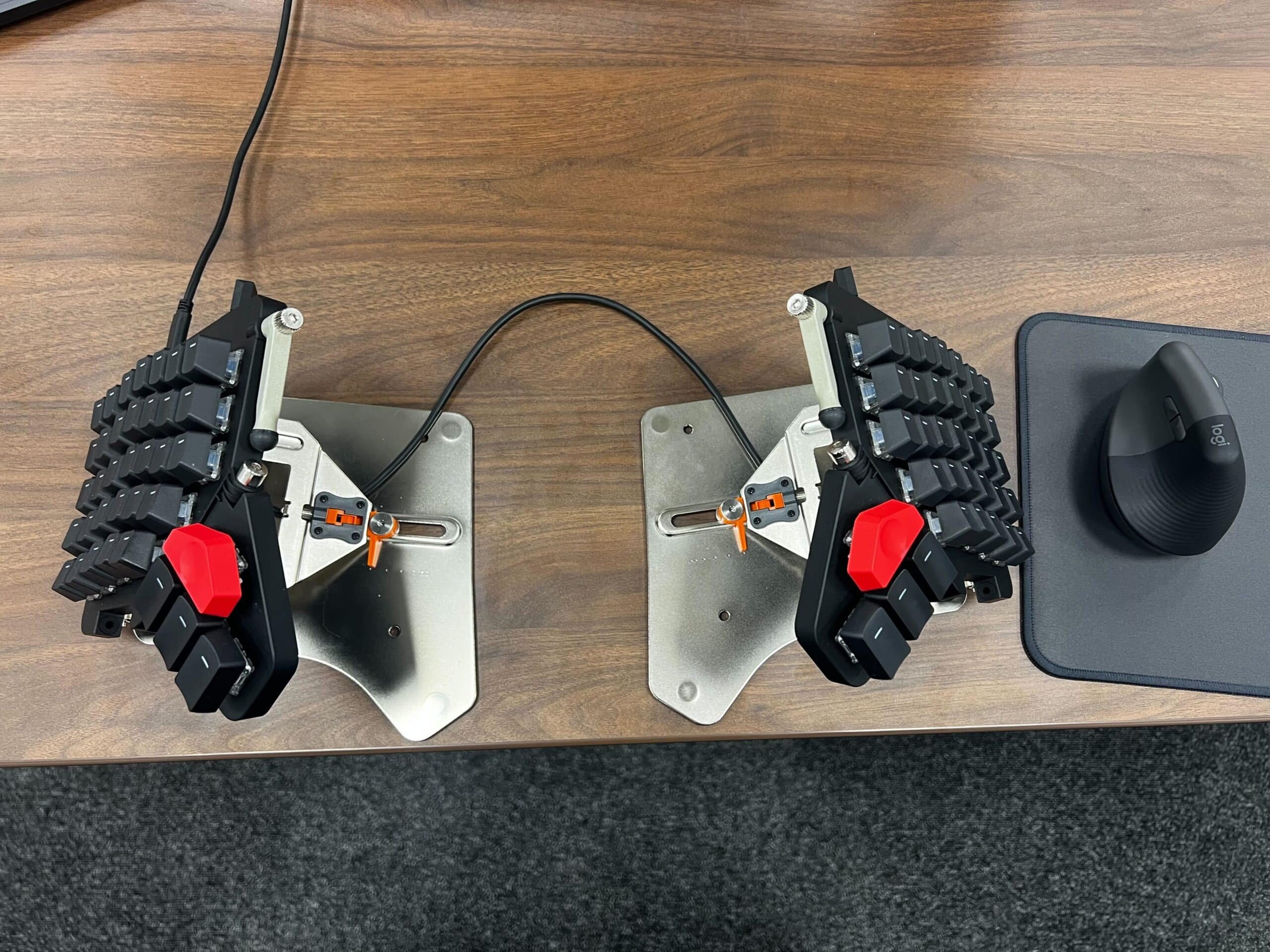Article summary
About half a year ago, I decided to try out a split keyboard. A few of my coworkers have them and I thought they looked really interesting. After talking to some of said coworkers about their keyboards of choice along with some online research, I found the Moonlander. It is a very expensive keyboard ($365), so I spent a few months going back and forth in my head wondering if it was worth trying or not.
Eventually, my coworker convinced me to just do it, and I’m so glad I did. It has completely changed the game for me. Here are a few things I really like about the Moonlander.
The Ergonomics
Tenting
I try to take my posture seriously at work. I’m one of those crazy people with a weird-looking, vertical mouse I bought after experiencing some wrist pain using a trackpad all day. After using that mouse for a while, I realized just how important our forearm pronation is when working in the same position for hours a day. This is something the Moonlander handles really well. The keyboard itself can tent up to keep our forearms in a healthier position all day.
Split
Since the keyboard is split in half, users can open up their shoulders as they work. I’ve noticed this keeps me sitting up a little straighter as well.
Ortholinear keys
The keys on the Moonlander aren’t staggered as on a normal keyboard. Instead, they are in a uniform grid. You have to get used to it, but it eventually makes it easier to reach for keys because your fingers don’t have to move diagonally. I also learned that the only reason keys are staggered on traditional keyboards is that it’s an artifact of typewriters.
The Software
There are plenty of split keyboards on the market significantly cheaper than the Moonlander, but the Moonlander has something the others don’t. ZSA (the company that built the Moonlander) also made proprietary software for configuring the keyboard called Oryx.
This is by far the most intuitive keymapping software I’ve used. I spent the first month or so tweaking my keymappings, creating macros, and even adding new layers to my keyboard. Each time I wanted to change something on the keyboard, it took seconds using Oryx. Also, Oryx compiles all of your configurations and stores it directly on the Moonlander, so it’s the same no matter what computer you plug it into. This has made my life so much easier as a developer.
Layers
I briefly mentioned it already, but adding layers has made a huge difference for me at work. It sounds silly, but I used to spend so much time looking down at my keyboard trying to find the symbol or number I needed, holding shift, and reaching across my keyboard for it. With the layers I have set up on my Moonlander, I can simply hold down a button on the thumb cluster (another nice addition to the Moonlander) and all of a sudden, my home row becomes all of the symbols I regularly use when coding, or it becomes numbers so I never have to spend time reaching for them. This saves me a lot of time when programming.
Thumb Cluster
On traditional keyboards, both our thumbs are wasted on a single button; the space bar. The Moonlander instead offers a cluster of 4 keys on both sides of the keyboard for the thumb. This is massive for someone who uses lots of keyboard shortcuts when working. I no longer have to reach for the shift, caps lock, enter, command, option, etc. that are tucked away in all the corners of a normal keyboard. This took some getting used to, but now I can never go back.
Final Thoughts on the Moonlander Keyboard
After spending six months using my Moonlander, I’m not sure I could ever go back. I strongly encourage any developer to give it a try. Sure it’s expensive and will make you look like a goober in the office. But, for something you spend the majority of the time doing, you should have the best tools for the job. Invest in yourself and invest early. Do it before you start experiencing physical pain or just so you can have the most time benefitting from all the cool things you can do with the keyboard to speed up your work.

